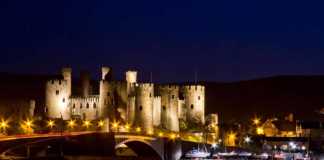Cambridge is one of England’s most famous university cities. Its incredibly intricate and detailed architecture, relaxing open green spaces and cobblestone streets make it the perfect destination to experience history, arts and culture. The city has seen many famous names pass through its university colleges, including Sir Issac Newton, Alan Turing and A.A. Milne. The university itself is the third-oldest still in continual operation, founded in 1209. On the university grounds, expect to see grand manor-house-style college buildings, ancient churches, maze-like libraries and green, leafy quadrangles.
Continuing its intellectual appeal, Cambridge also has many impressive museums and galleries celebrating the arts and sciences, with a particular focus on works carried out or discoveries made within the university grounds. Aside from its impressive educational prowess, Cambridge is a beautiful city to explore on foot. The city itself is ancient and, as a result, is filled with a myriad of architectural styles and designs. Attend a guided walking tour with a local guide or graduate from the university to learn more about the history of the city and its buildings.
Plenty of independent cafes and restaurants across the city serve excellent dishes, baked goods and luxury dining menus. For the ultimate sweet treat, indulge in a Chelsea Bun from Fitzbillies, or wander down Mill Road, the city’s main dining street for something more akin to fine dining. There are so many things to do in Cambridge that a day may not be enough. Here are 20 things you should add to your Cambridge wish list.
Contents
- Cambridge, England
- 20 Things To Do In Cambridge
- 1- Visit King’s College Chapel
- 2- Search For The Corpus Clock
- 3- Visit St John’s College
- 4- Climb The Great St Mary’s Tower
- 5- Browse The Shelves Of The Wren Library
- 6- See The Collections At Fitzwilliam Museum
- 7- Have A Drink At The Eagle Pub
- 8- Photograph The Mathematical Bridge
- 9- Go Punting On The River Cam
- 10- Wander Around Cambridge University Botanical Gardens
- 11- Marvel At The Manuscripts In The Old Library
- 12- Take A Walking Tour With A Local
- 13- Learn About Climate Change At Scott Polar Research Institute
- 14- Admire Art At Kettle’s Yard
- 15- Admire The Engineering Of Round Church
- 16- Photograph The Bridge of Sighs
- 17- Enjoy A Sweet Treat At Fitzbillies
- 18- Try The Flavours At Jack’s Gelato
- 19- Step Back In History At Castle Mound
- 20- Visit The Sedgwick Museum of Earth Sciences
Cambridge, England
Top Tours
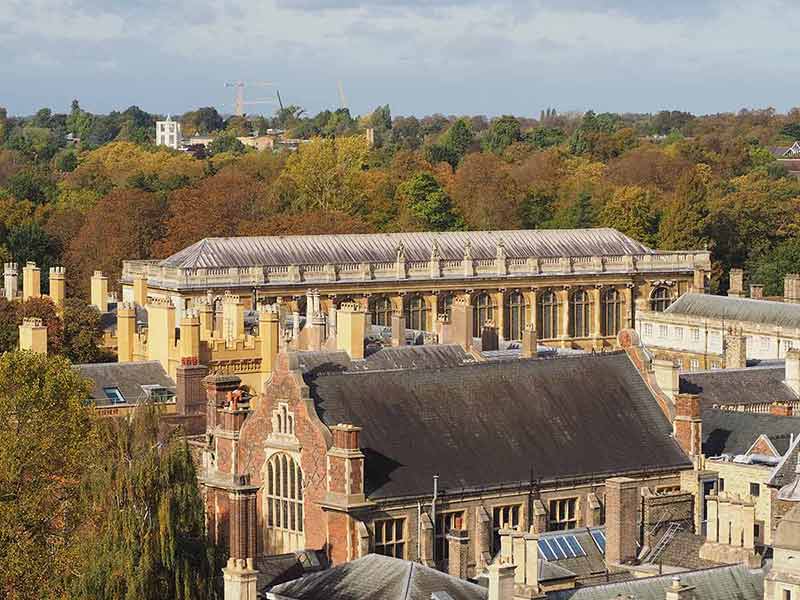
- Cambridge: Guided Punting Tour – a classic and relaxing experience.
- Cambridge: City and University Tour – including King’s College.
- City Sightseeing Cambridge: 24-Hour Hop-on Hop-off Bus Tour – explore at your own pace.
20 Things To Do In Cambridge
1- Visit King’s College Chapel
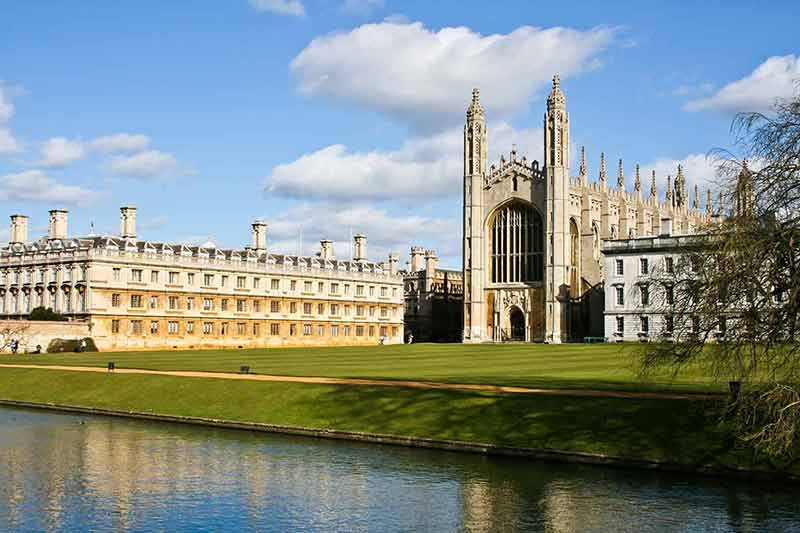
One of Cambridge’s most iconic and beautiful buildings is King’s College Chapel, located inside King’s College at the University of Cambridge.
During term time, the chapel serves as a functional church where students can worship, and throughout the year, hosts several events, including carols broadcast via radio and regular choir concerts.
Inside, the chapel is truly beautiful and features the largest fan-vaulted ceiling in the world.
Stained glass windows can be found on all sides of the chapel, depicting important passages from the Old and New Testaments, saints, and Christ, all finished in brightly coloured glass.
King’s College Chapel is at King’s Parade, Cambridge, CB2 1ST. Skip the line and book your university tour here.
2- Search For The Corpus Clock
When wandering around the University and its many colleges, stop by Corpus Christi College to search for the Corpus Clock.
This large and ornate sculptural clock is known locally as the Grasshopper Clock and can be found outside Taylor Library.
John C. Taylor, an alumni of the college, conceived the idea and design of the clock unveiled in 2008 by renowned physicist and Cambridge student and professor Steven Hawking.
The clock is grand and is made from 24-carat gold plated stainless steel, and unusually it features no hands, instead telling the time by displaying LED numbers through slits in the face design.
Corpus Clock is at 58 Trumpington Street, Cambridge, CB2 1RH. Find it at your own pace on the 24-Hour Hop-on Hop-off Bus Tour.
3- Visit St John’s College
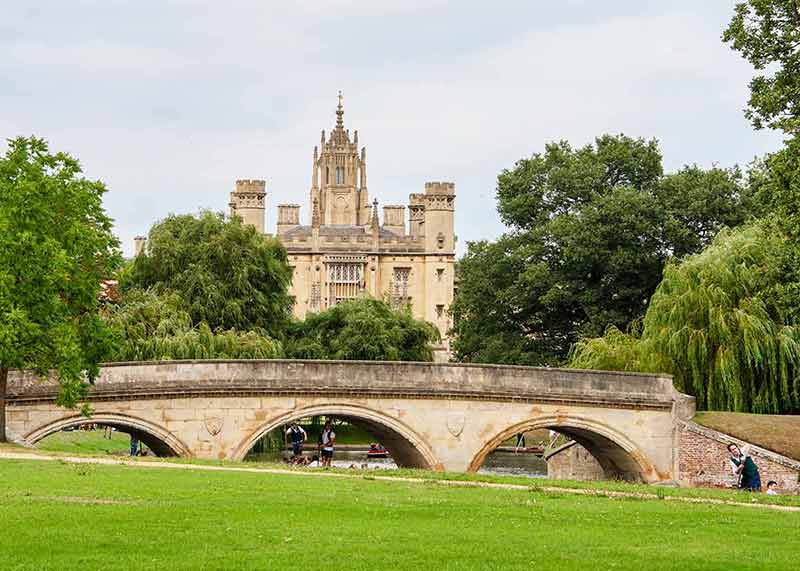
Lady Margaret Beaufort founded St John’s College in 1511, and since then the college has served as a learning institution for subjects such as medieval language, natural sciences and archaeology.
Like many of the University of Cambridge’s colleges, St John’s College is architecturally stunning and well worth photographing and exploring during its open days. You can also book a ghost tour at night.
The most significant parts of the college are the dining hall which features a decorative ceiling including coats of arms from benefactors, the Bridge of Sighs, the old College Library and the Master’s Lodge and Garden.
St John’s College is at St John’s Street, Cambridge, CB2 1TP. Skip the line and book your tour here.
4- Climb The Great St Mary’s Tower
Great St Mary’s, known as the University Church, is a beautiful and historic church in Cambridge.
While the church is interesting to explore and has many intricate stained glass windows, carvings and sculptures inside, its tower draws many through its doors.
The top of the tower is reachable after climbing 123 steps, from which expansive stretching views across the city’s ancient rooftops can be seen from all angles.
The viewing platform was recently refurbished, allowing visitors a more comfortable and safe visit.
After climbing back down from the tower, relax and unwind at the church’s cafe, Michaelhouse, set inside Great St Mary’s medieval chapel.
Great St Mary’s Tower is at The University Church, Senate House Hill, Cambridge, CB2 3PQ.
5- Browse The Shelves Of The Wren Library

Inside Trinity College is Wren Library, one of the most important and historical libraries in England.
The library has a wide range of medieval manuscripts in its collection, including writings from Piers Plowman, a 14th-century writer, and the 13th-century manuscript ‘The Romance of Alexander’.
Other important works in the library’s collection include a Sir Issac Newton annotated copy of Principia Mathematica, Winnie the Pooh by former student A.A. Milne and an impressive collection of the works of Shakespeare.
The look and feel of the library is every bookworm’s dream; old black and white tiled floors, towering ceilings, and dark mahogany bookshelves piled high with ancient texts.
Wren Library is at Trinity Street, Cambridge, CB2 1TQ. You may like the Cambridge: Scholars & Secret Societies Exploration Game.
6- See The Collections At Fitzwilliam Museum
The Fitzwilliam Museum houses a vast collection of carefully curated objects from art and history, including examples of treasures from ancient Egypt, Rome and Greece, medieval manuscripts and one of the most important collections of Asian art in the country.
George Basevi designed the building now housing the museum in the early 1800s in the neo-classical style and was first opened to the public in 1848.
While the museum houses an astonishing collection of important works of art, the building is also beautiful, with colourful marble columns and moulded plaster ceilings finished with gold leaf.
The Fitzwilliam Museum is at Trumpington Street, Cambridge, CB2 1RB.
7- Have A Drink At The Eagle Pub
As you may expect in any university city, there are plenty of pubs and bars in Cambridge, however, none have such significance to the world as we know it as The Eagle Pub.
Founded in 1667 as a coaching inn and public house, The Eagle is the oldest pub in the city.
The Eagle is historically significant thanks to the discovery of DNA by Cambridge scientists Watson and Crick, who discussed their theories over drinks in the pub in 1953.
Another important historical link and now a permanent part of the pub’s decor is its bar ceiling, which has the names of WWII RAF airmen’s names burned onto it.
The Eagle Pub is at Bene’t Street, Cambridge, CB2 3QN.
8- Photograph The Mathematical Bridge
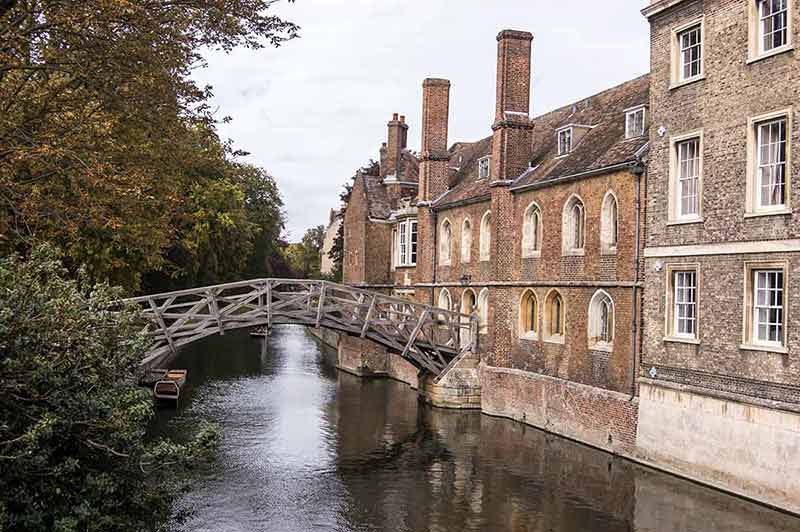
Mathematical Bridge, or simply The Wooden Bridge, is an important landmark in Cambridge.
William Etheridge designed the bridge in 1748, however, the bridge spanning the River Cam today was built in the early 1900s, but to Etheridge’s original specifications.
The bridge crosses the river from the riverside building, the oldest building on the banks of the river, to a leafy green riverside walkway.
The bridge is the most iconic in the city and is widely photographed.
Mathematical Bridge is impressive in its design as it uses maths to counteract the natural weakness of wood as a beam in tension by using triangulation to create an arch, allowing compression to be the dominant force.
Mathematical Bridge is at Queen’s College, Silver Street, Cambridge, CB3 9ET. Join the Cambridge: Guided Historic Walking Tour.
9- Go Punting On The River Cam
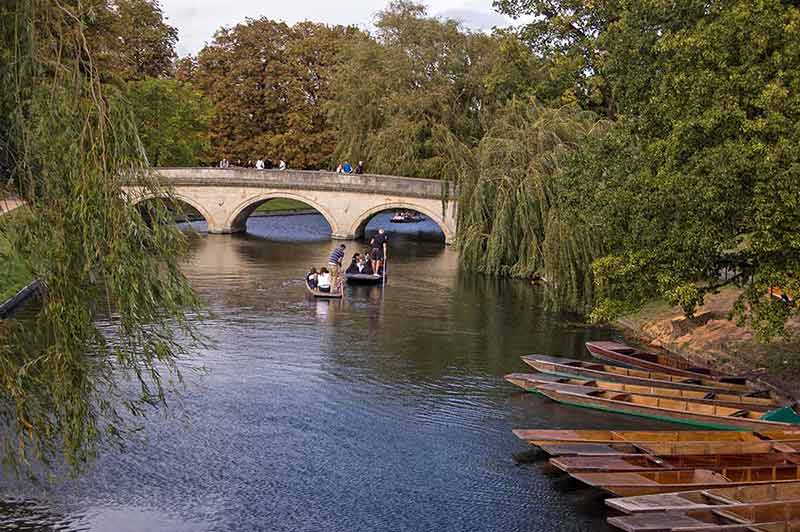
A favourite pastime in Cambridge is to punt along the River Cam, taking in the riverbanks’ architecture, magical atmosphere and beautiful greenery.
A punt is a flat-bottomed boat with a square bow perfect for shallow rivers.
There are several punting services in Cambridge offering tours or self-led punts.
You will see many of the University of Cambridge colleges ‘Backs’ from the river, offering unique views of these important historical, educational buildings.
You will gently punt past The Wren Library, Bridge of Sighs and King’s College Chapel.
There are numerous locations along the River Cam to hire punts or to join a punting tour with a local guide.
10- Wander Around Cambridge University Botanical Gardens
Cambridge is a beautifully designed city that perfectly intertwines ancient architecture with open green spaces.
Cambridge University Botanic Gardens is one of the best green spaces in the city.
The garden includes many garden rooms, including a winter garden, woodland, bee borders and a Victorian glasshouse filled with tropical plants.
One of the oldest parts of the gardens is the Old Pinetum, a woodland filled with old pine trees, dating from the gardens founding in 1846.
After strolling around the gardens, enjoy a cup of tea and a slice of cake made by local company Roberta’s Patisserie at the Garden Cafe.
Cambridge University Botanic Garden is at 1 Brookside, Cambridge, CB2 1JE.
11- Marvel At The Manuscripts In The Old Library
Another of Cambridge University’s must-visit libraries is the Old Library at Christ’s College.
The library is much cosier in feel than the Wren Library, with bookshelves almost reaching the low ceiling.
Each bookshelf is tightly packed with a range of ancient texts dating back to the 11th century.
The library houses a collection of more than 50,000 early printed manuscripts and books, including those printed in Latin, Arabic and Sanskrit.
The oldest manuscript in The Old Library is a copy of the Gospels written in Greek and dating from the 11th century.
The Old Library at Christs College is at Christs College, Christs Lane, Cambridge.
12- Take A Walking Tour With A Local

A walking tour is one of the best ways to get to know a new city.
Booking a walking tour in Cambridge will show you around the city, identify some of the most famous and important parts of the city and give you a locals view of the best shops, cafes and restaurants.
Many walking tours in Cambridge are led by previous students of the university who can further uncover the history of the university, its rivalries and unique ceremonies.
Walking Tours depart from numerous locations across the city, so check in with tourist information or pre-book your tour online.
13- Learn About Climate Change At Scott Polar Research Institute
The Scott Polar Research Institute is dedicated to understanding geology and climate change, focused around the ongoing changes in polar regions.
Established in 1920 as part of the university, the Scott Polar Research Institute houses an extensive research centre, Polar Library, archive and The Polar Museum.
The museum is an excellent destination for those interested in exploration history, climate change and the polar regions.
The museum has displays of Arctic exploration history, including protective clothing, scientific instruments and photographs.
Scott Polar Research Institute is at Lensfield Road, Cambridge, CB2 1ER.
14- Admire Art At Kettle’s Yard
Kettle’s Yard displays the universities collections of modern and contemporary art.
The museum is unique as it is a former home and has retained this style rather than creating a traditional gallery space.
H.S. Ede and his wife Helen lived in the house in the late 50s to early 70s and filled their home with various artworks, furniture and textiles.
The couple’s ‘open house’ approach has continued to this day, as visitors can explore the building as though they were walking through someone’s home.
This unique layout means no artworks are labelled, however, further information on the pieces displayed can be found in a visitors guide.
Kettle’s Yard is at Castle Street, Cambridge, CB3 0AQ.
15- Admire The Engineering Of Round Church
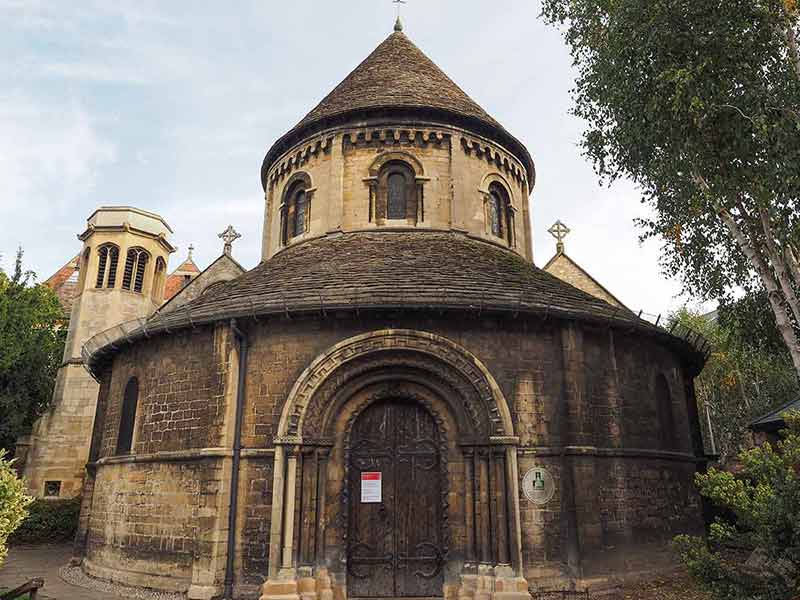
Round Church is a unique religious building in Cambridge, thanks to its unusual shape.
Crusaders designed and built during the 12th century and modelled the church after the Church of the Holy Sepulchre in Jerusalem.
The church’s architecture is predominately Norman in design and includes thick stone pillars, rounded arches and many carved stone faces.
The church is no longer in active use as the congregation grew too large for the building to accommodate everyone.
As a result, the church today is now used as an important historical site and is the starting point of many city walking tours.
Round Church is at Bridge Street, Cambridge, CB2 1UB.
16- Photograph The Bridge of Sighs
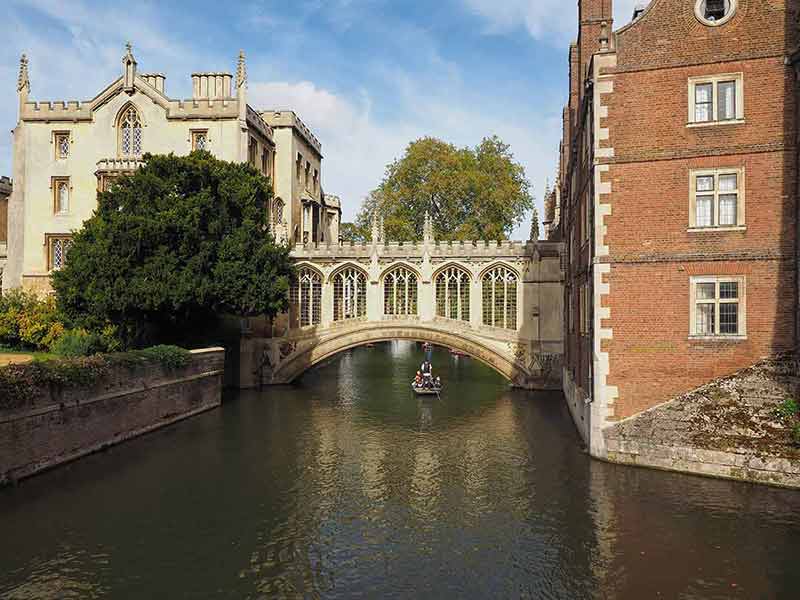
Crossing the River Cam is one of Cambridge’s most photographed sites: the Bridge of Sighs.
Henry Hutchinson, an architect, designed the bridge in 1831 to cross the river between two sections of St John’s College; Third Court and New Court.
The bridge takes its name from the Bridge of Sighs in Venice, however, both bridges are different in design.
Queen Victoria loved this bridge and its location more than any other in Cambridge.
Visitors to the bridge will see punters underneath it, students crossing its span, and ducks swimming serenely below.
Bridge of Sighs is at St John’s College, St John’s Street, Cambridge, CB2 1TP.
17- Enjoy A Sweet Treat At Fitzbillies
Fitzbillies is the perfect place to indulge in something sweet when visiting Cambridge.
Fitzbillies has two locations in Cambridge, with their original bakery and tearoom on Trumpington Street, and a newer cafe on Bridge Street.
Ernest and Arthur Mason founded Fitzbillies in 1920, who as sons of a local baker, used their WWI demob money to establish the bakery.
The bakery is famous for its Chelsea buns, a sticky and sweet doughy treat packed with dried fruits and cinnamon and rolled into a distinctive spiral shape.
Order a Chelsea bun and a cup of tea, and take some with you.
Fitzbillies original shop is at 51-52 Trumpington Street, Cambridge, CB2 1RG.
Their second location is at 36 Bridge Street, Cambridge, CB2 1UW.
18- Try The Flavours At Jack’s Gelato
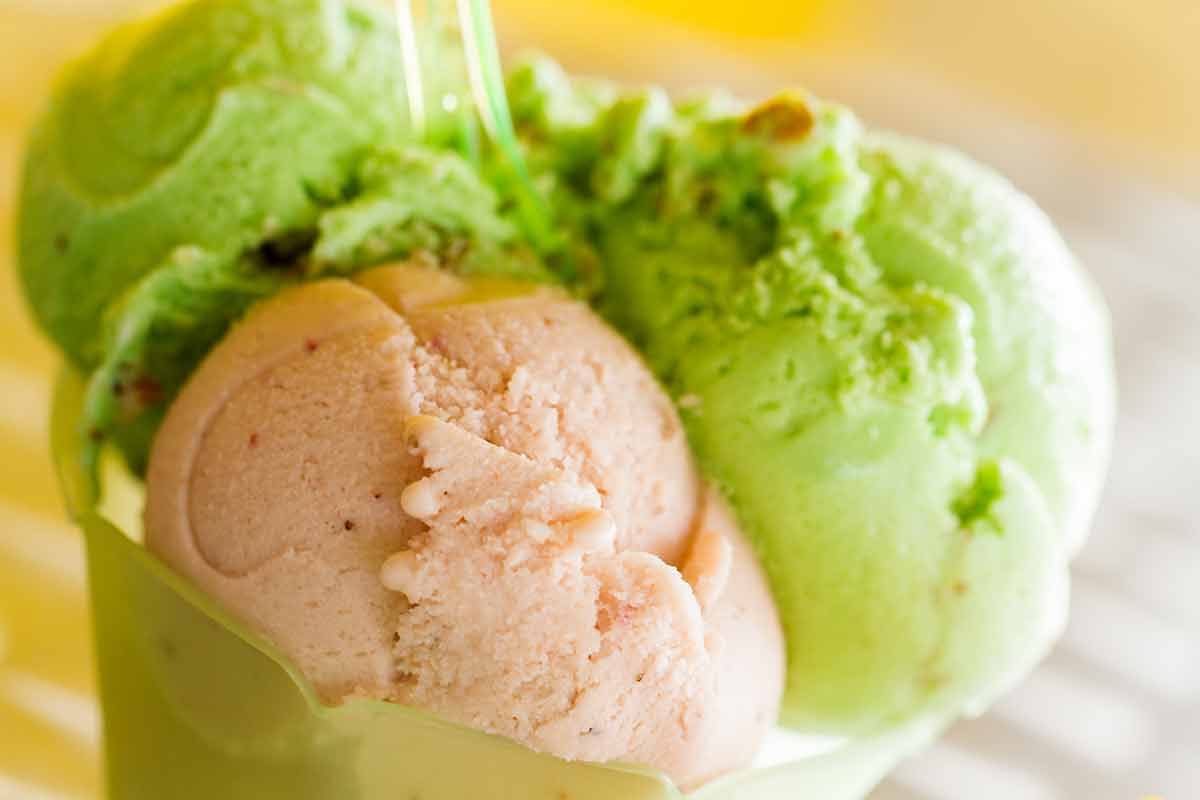
Jack’s Gelato has been in Cambridge since 2010, having started as a one-man operation making small batches of gelato and selling them from a cart.
Jack prides himself in using the best and, wherever possible, locally sourced ingredients, including honey from the city’s beehives.
Today Jack has moved from a cart to two store locations, both stocking a wide variety of flavours of both gelato and sorbetti.
It is still possible to purchase ice cream from the cart; however you need to track down its location using clues left on Instagram.
Try the burnt sugar, salt, or toasted white chocolate for a twist on classic flavours, or opt for something a little more local with a scoop of Chelsea bun.
Jack’s Gelato is at 6 Bene’t Street, CB2 3QN and 7 All Saints Passage, CB2 3LS.
19- Step Back In History At Castle Mound
Castle Mound is the local name for Cambridge Castle, where a Norman castle once stood.
William the Conqueror built Cambridge Castle in 1068 as part of his southern defence system.
The castle underwent many changes in the following years, including refortification during the Civil War and being transformed into a gaol.
Today only the motte and some surrounding earthworks remain, however, the site is still worth a visit for its historical significance and the pleasant parkland surrounding it.
Castle Mound is at Castle Street, Cambridge, CB3 0RG.
20- Visit The Sedgwick Museum of Earth Sciences
Expand your knowledge of Earth at the Sedgwick Museum of Earth Sciences, part of the University of Cambridge’s geology department.
Established as the Woodwardian Museum in 1728, the Sedgwick Museum of Earth Sciences is the oldest of the university’s museums.
The museum has more than 10,000 fossils in its collection and a range of rocks and minerals that date back to more than two million years ago.
Fossils and bones in the museum’s collection include dinosaurs, ancient animals and the largest millipede known in existence.
A vast collection of minerals and meteorites is also displayed in wooden, glass-fronted display cabinets typical of a geological archive.
Sedgwick Museum of Earth Sciences is at the University of Cambridge, Downing Place, Cambridge, CB2 3EQ.
- Best Time To Visit England
- 20 Hidden Gems in London
- 20 Famous Landmarks in London
- 20 Famous Landmarks in England
- 20 Famous Landmarks in Ireland
- 21 Famous Landmarks in Wales
- 20 Landmarks In Scotland
- 10 Beautiful Villages in the Cotswolds
- 21 Things To Do In York
- 20 Things To Do In Scarborough
- 20 Best Beaches In Scotland
- 20 Best Beaches In Wales
- 20 Day Trips From London
- 20 Ways To Spend Christmas In London
- 20 Things To Do In London At Night
- 20 Things To Do In Portsmouth
- 20 Things To Do In Exeter
- 20 Things To Do In Gibraltar
- 7 Beaches In Gibraltar
- 20 Things To Do In London In Summer
- 20 Things To Do In Autumn In London
- 20 Things To Do In Winter In London
- 20 Things To Do In Glasgow
- 10 Things To Do In Edinburgh
- 20 Things To Do In The Isle Of Skye
- 15 Things To Do In Derry
- 10 Things To Do In Belfast
- 5 Things to Do In Northern Ireland
- 5 Places To Go Whiskey Tasting In Dublin
- 20 Fairytale Castles In Scotland
- 20 Fairytale Castles In Ireland
- 20 Fairytale Castles In London
- Castles in Great Britain
- The Borough Markets
- Which London Museums Should I Visit?
- The Gore London Review
- 20 Things To Do In Leicester
- 20 Things To Do In Sheffield
- 20 Things To Do In Southampton
- 20 Things To Do In Blackpool
- 20 Things To Do In Ipswich
- 20 British Drinks
- 20 Things To Do In Bath
- 20 Things To Do In Cambridge
- 20 Things To Do In Newcastle
- 20 Things To Do In Leeds
- 20 Things To Do In Norwich
- 20 Things To Do In Brighton
Plan Your Trip

Rent A Car – Find the best car rental rates at Discover Cars. They compare car hire companies to provide you with the best deal right now.

Find A Hotel – If you’re curious about this article and are looking for somewhere to stay, take a look at these amazing hotels.
